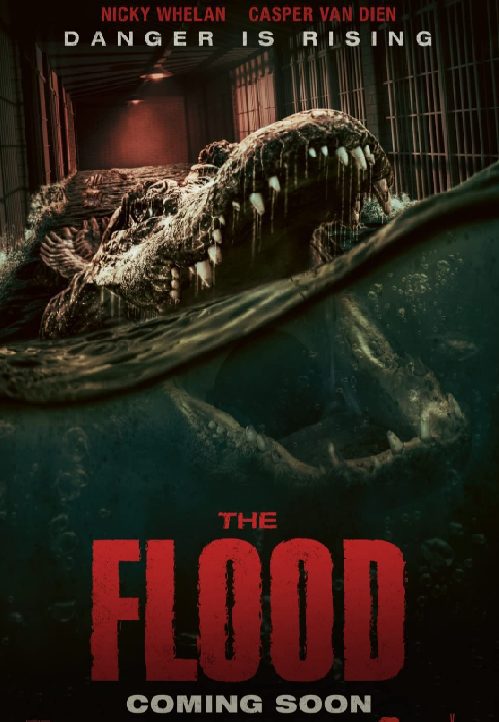Making a movie without the backing of a major studio is an immense undertaking riddled with challenges. But independent filmmakers accept these obstacles as a labor of love to bring their stories from script to screen.
Limited budgets mean tighter control of finances and having to constantly find creative workarounds. Fewer resources require more self-reliance to coordinate complex logistics of filming on location, providing equipment, and problem-solving on the fly. Smaller teams handle an array of roles from directing to craft services, demanding flexibility and resilience.
Independent films also rarely have the luxury of extensive shooting schedules. Rigid timelines limit options for reshoots and pickup shots, raising the stakes for every scene. And distribution deals without studio leverage mean limited theatrical releases unless runaway word of mouth helps a film break out.
Yet despite these roadblocks, the passion that drives indie filmmakers pushes them to go all in. Long hours, sleepless nights, and single-minded focus become the norm. Because making your cinematic vision a reality against the odds is the ultimate reward.
For independent filmmakers, challenges are expected but never insurmountable. The sweat, tears, and tireless hustle are fueled by a love of the craft and dedication to sharing their unique stories with the world. Their grit in the face of constant obstacles is what the spirit of indie filmmaking is all about.
We at Horror Facts have watched many independent films before but rarely get the opportunity to peek behind the curtain to see what goes into making them.
Luckily we got the opportunity to speak with independent producer Daemon Hillin to discuss his new film The Flood, and what we learned about the difficulties that go into making an independent film made us appreciate all the hard work and perseverance the cast and crew demonstrate to bring the film to life.
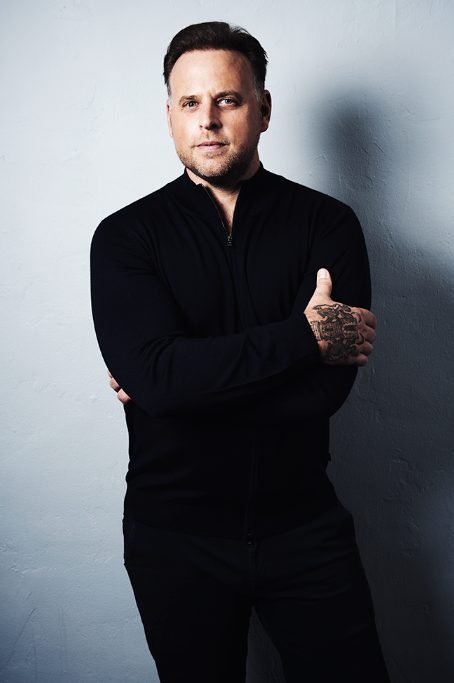
Horror Facts: First off, thank you for taking the time to speak to Horror Facts, we really appreciate it.
Daemon Hillin: Of course, thanks for having me.
HF: What inspired you to produce The Flood? What drew you to this particular story?
DH: What drew me to the story, first and foremost was the two writers involved Chad Law and Josh Ridgway, they’re known in the industry for being great writers. So, when Jordan Dykstra, who’s an executive producer on the project, brought me the script from those two writers and gave me the pitch on it, I immediately said “You know what, this is crazy, there is a lot going on here, I really want to dive into it”, and that’s how it started.
HF: What do you look for in a script before deciding to produce it?
DH: It all depends on what the distributors are looking for. They start by giving me criteria for what is hot and what is selling right now. For example, the distributor will tell me “We want a World War 2 film, we want creature features, or we want a shark movie.” This is why the genre of movies that I make are kind of all over the place because I base my decisions on the feedback that I get from the distributors. Then it’s my job to implement that feedback right away. I don’t sit around and develop things. I immediately go out and find something that already exists that manages what the sales and distributors are looking for and then immediately start packaging it.
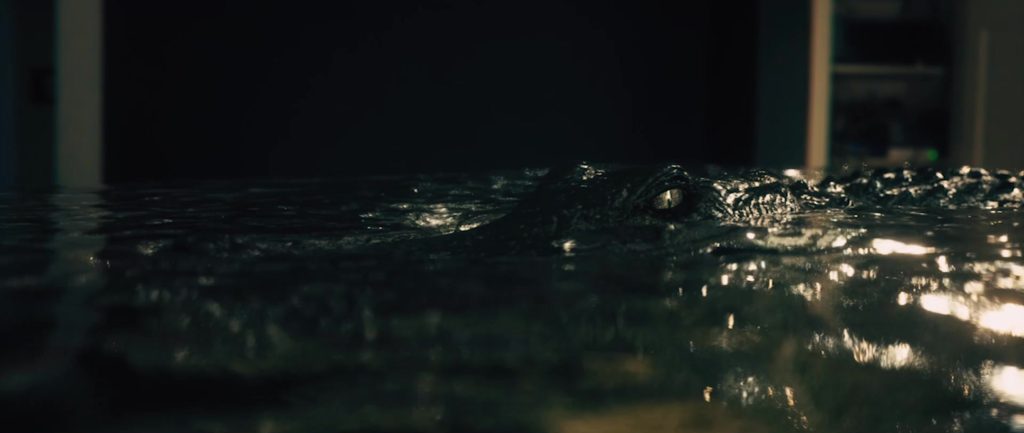
HF: So then when is your cocaine movie coming out?
DH: Yeah right (laughs) Cocaine Alligators.
HF: Were there any challenges in securing financing for The Flood?
DH: There are always challenges in independent financing. So, what happens is when we hit hiccups, the production company financing the film, like Hillin Entertainment, will end up having to make up for any shortfalls and really put all our skin in the game, literally, all of our skin in the game until were able to structure a finance model with sales and send out a package to try and make up the financing. With independent filmmaking you always have to be willing to put yourself out there, because in almost every movie there are always going to be financial issues, it’s just a matter of what hurdles am I jumping through right now, and every movie is completely different. So, each movie has its own trials and tribulations that you have to deal with from the financial side.
HF: How did you overcome those challenges?
DH: Pure will. Seriously, it comes down to once you go, once you start moving that train has left, and you can’t stop that train no matter what, especially on an independent level. Because if I have already put six-hundred thousand dollars into the film and I’m already through prepping, that means that I have a whole team in Thailand depending on me. So, at that point, it’s up to you to figure it out, you don’t have an option to quit. So, it’s brute force, will of the mind, and telling yourself “I’m going to make this happen, this has to happen, no matter what” because I know there’s no way I can fail on this. So it all comes down to willpower.
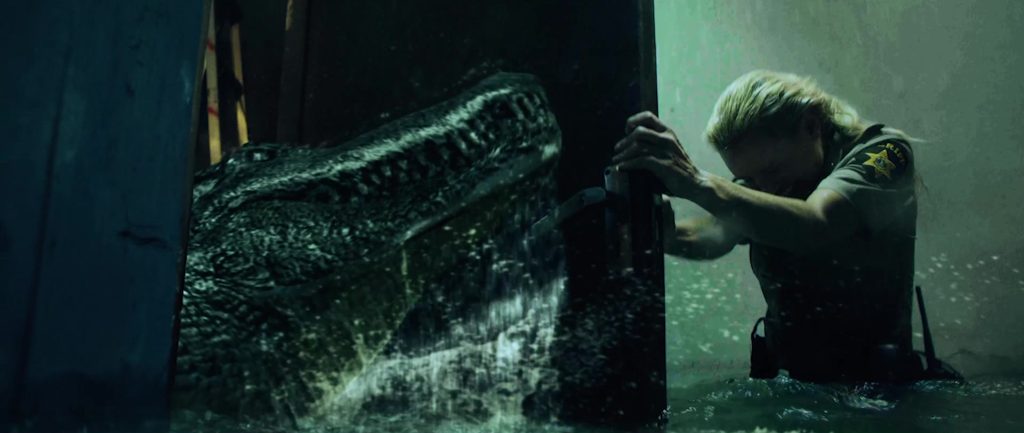
HF: That makes sense because you can’t pull the plug on the film project at this point, given that you have already invested a large sum into the film.
DH: Exactly, because when your six-hundred thousand dollars into a movie there’s nothing you can do to stop it. So, what will happen is sometimes you have to call your friends, now I’m fortunate that a lot of my friends are financial guys, so I’ll just call one of my friends like BGG Capital or Landon, and say “Hey, I need four hundred thousand bro, like now” because it’s still going to take another four weeks to get the financing and I need the money now to get me through this shoot. That’s what happens, it’s a phone call and then when you’ve done this enough times, people just take your word and they’ll just send. BGG Capital is one of those companies that I call up and they help me out whenever I need it. There are a few other people like that, Joseph Lanius is another one. It’s these individuals that are all the executive producers that you see on a film because they’re the people that come to our aid in your time of need.
HF: So, what were the challenges, because there had to be challenges filming a movie set during a hurricane and flood?
DH: The number one challenge in this movie was how do we make a film that the interior is completely submerged in water. We had to be able to find a location where we could build sets in and then flood them. Then when you’re doing that on location you also have to look at the structural integrity of the building and have inspections done because you have to make sure that you can bring in that kind of water because we brought in a lot of water. It was like an interior pool that we built these sets that were probably twelve feet high and all the actors had to come down the side and walk into the set and then we had our camera teams in there and were just filling it with water. It was a very complicated process and the water aspect was a big huge challenge, especially trying to keep the water levels at the right stages when you’re shooting different angles. The whole thing was a very big task for a very small budget.
HF: Were there any particular problems or lessons learned in keeping the water conditions ideal for shooting?
DH: Yes, there were a lot of things that you learn along the way. For example, you start to notice how the water can get dirty really quickly. It would go from clean water to essentially dirt water, and we had to figure out very quickly how to resolve this issue because if the water is changing color, it means that we can’t do these shots of the alligator profile under the water. So, in order to try and stop this from happening it became like a ritual on set where before going into the water everybody make sure there was nothing on their skin that could potentially make the water dirty. We also took steps like providing the actors with two sets of shoes, making sure all the gear was clean, and overall, just trying to make sure everything was as clean as possible on set in order to attempt to overcome this issue.
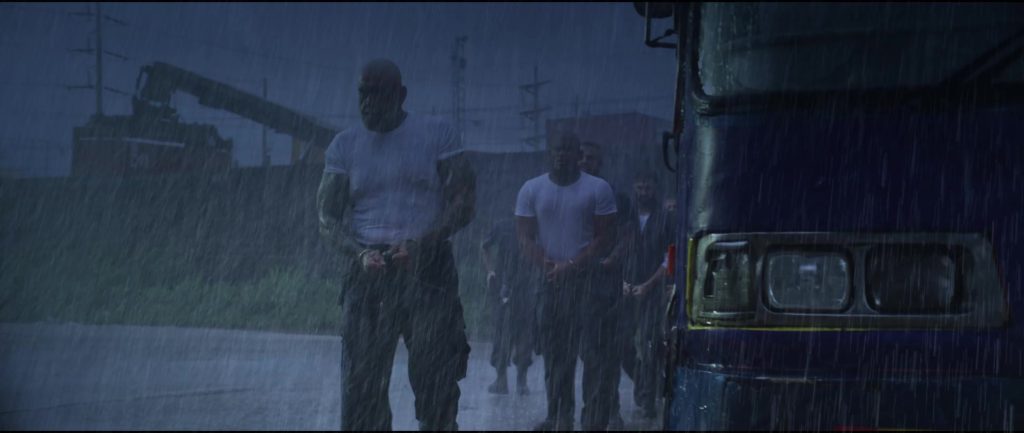
HF: Going into this film what was your overall vision? What did you want out of this film?
DH: The number one goal I have going into a movie is putting together the right creative team to oversee that vision. Because I’m a very good big-picture kind of person, I can see what we need in order to make that sell. So, I rely on people like Brandon Slagle or Niccolo De La Fere, the Director of Photography, to really get in there on the creative side and bring out this overall vision that I pitched to them from the start. I can’t take credit for all this creativity, the color, and the look – that’s all them. I can only take credit for assembling the team because that’s what I did here.
HF: Were there any instances while filming that exceeded your initial vision for the film?
DH: Yeah, I had just come off the film Maneater and with that film, we tried to do a practical shark. We tried it and it was difficult, so we had to cover it up with effects. So in The Flood, it was really about allocating more time and money to the VFX side of things. And I feel like we really succeeded in having nine and a half minutes of alligator that doesn’t come across as so pixelated – it’s just a better quality. I’m really happy because it’s important to remember we’re still an independent film, but I feel we really succeeded in blending the alligators with real life seamlessly. And that’s what I’m really happy with.

HF: To me as a viewer, the CGI alligators looked convincing, so I’m curious to hear about the decision process and trade-offs involved.
DH: Thank you. You know, it’s always something you worry about. At the beginning of these creature features, you always ask yourself – can I do this practically? And then you wonder, “Well if I spend this money and we fail with the practical effects, I’ll have less for VFX, and the VFX may suffer.” So that’s why we chose to go all CGI for the alligators. Now, the stunts the actors did were legit wirework. We rigged up the actors so that as the alligators attack and kill, they can spin in that death roll – which was Brandon Slagle’s idea for exploring different killing methods beyond just chomping. I’m very happy with how we blended the VFX and real stunts.
HF: You mentioned the death roll. Did you consult with any alligator experts during the filmmaking process?
DH: Brandon Slagle did a lot of research. That’s what I love about Brandon – when I hire him, I also hire him to write for me. What he does is he does a ton of research beforehand. Then he presents something to me and that’s invaluable because I know he’s doing the diligent research. I know we’re not National Geographic here, so it’s not 100% precise, but this is a creature feature. Overall, I’m very happy with the creative decisions we made based on his research.
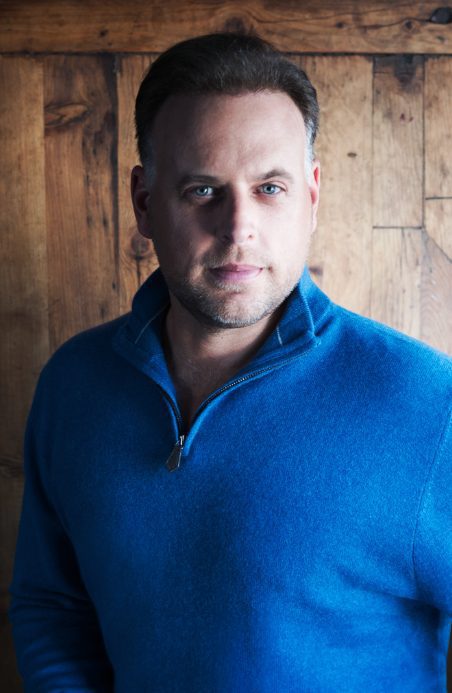
HF: I wanted to ask you about casting the film. What was your vision for the cast? Were there any specific character archetypes among the prisoners or guards that you knew you wanted to stand out?
DH: With the Sheriff Newman character, we knew we needed a strong female lead who could kick butt and perform their own stunts, but also handle dramatic scenes along with the physicality because this movie called for both. In the film, we have the talking heads scenes, the emotional type scenes, but then you have those very serious physical moments where she’s fighting people in the jail cells. So, when casting the film, it was really important that we could find actors that are very talented and capable of doing their own stunts because there is no unfortunately no stunt person doing it for them. It was also important that they have a great attitude because the environment in which we were shooting in is very difficult. Overall, we knew that the actors we hired would have to be able to keep up with the stunts and then also keep up with how quickly we were shooting. In independent film making it takes a lot of trust for us to choose those actors because it’s a very harsh environment. So, you really have to ask yourself “Who can we go to” and you start to go through your Rolodex and think “Who have we worked with in the past that can get this done” because you don’t want to take any chances.
HF: So then going into the film did you have a clear idea of the actors you wanted?
DH: Yes, we had a very clear idea going into the film of who we wanted to cast. Looking specifically at the three major characters in the film, we knew that we wanted Nicky Whelan for Sheriff Newman, because she is a bad a** woman that can fight and get the job done, and I had her in Maneater so she understands the effects side of things. In regards to Casper Van Dien, whether it be this war movie that I did with him, a very dramatic role, or even portraying a serial killer, it’s clear in his performance that he just knows how to take on any character. In his portrayal in this film, he plays this “cop killer” with a stoic presence, but he can also effectively emote a sense of what the character has been through and convey that to the audience. Then with the character of Rafe Calderon, we again knew going in that we wanted Louis Mandylor for the part because it’s another role that’s very physical and you need a superb actor to play this part. Here’s a guy who is being dragged through the water and having to perform his own stunts, all while being capable of delivering his lines. It was these three actors that really made this movie and we were blessed to have all the other actors too, because their dynamic was great. But we leaned heavily on these three to get us through this film.
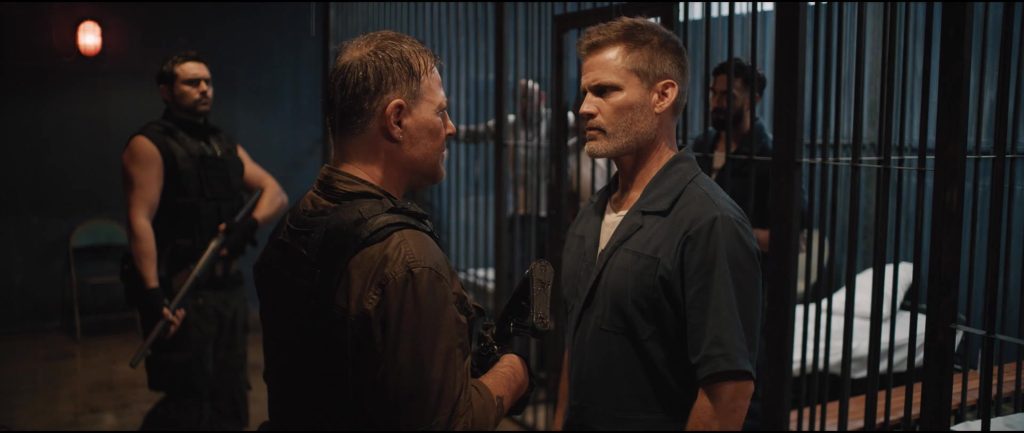
HF: Were there any instances where actors significantly shaped or changed their characters from your original conception through their performance?
DH: There are two polarizing characters in the film, it was the Mike Ferguson, Floyd role, and the Jox role by Randall Bacon. Those were kind of the gangster and the white supremacist roles, that going in we knew would be a touchy subject, and we were like “How is this really going to feel on set?” because with these characters there is this racial tension. It was really interesting to see the two get to know each other before they had to go into the scene and say these things to each other that are rough. They say rough things to each other and they have this very rough dynamic. So, I think that seeing those two, those are probably my favorite characters because they both put so much into it. I got the most out of those guys.
HF: How closely did you work with the director during pre-production, filming, and post-production?
DH: I worked with Brandon quite closely. What I tend to do is give him kind of steps, like for example, I will say to him “This is where we’re at now go work it out”. Then he’ll come back and present his ideas of how to best achieve this concept. From that, I’ll determine what’s needed, which may require a specific stunt team or something in order to successfully achieve his vision. It’s my job to provide him with the tools he needs in order to accomplish his mission. It’s a hand-in-hand process but also allows and gives him the ability to have all the tools that he needs in order to create this movie. I usually go to the set every day. The first few days I’m there every day making sure that the wheels are greased and that everything is working right, but as we get more and more into production, I spend less time on set. But, I will always make sure I’m on set when we have to shoot a very difficult scene or a scene that is heavy with stunts or just something unique, just to make sure everything is good. I always like to have my hand on the pulse of the production when it comes to that big stuff. In post-production, I allow Brandon to cut the movie that Brandon wants to cut. I am just responsible for giving some direction like “You got to hit these run times” or “This needs to be included in the film”. Overall, I’m a very big-picture guy and I let him define all the little small niches throughout the film.
HF: You talked about complex scenes. What was the most technically complex or difficult scene to film?
DH: One of the most difficult scenes to film, was when we had to film the prison escape scene. For that particular scene, it ended up having to be broken up into pieces. In the first half of the scene, we had to film our actors climbing up this rope and escaping into a vent. It was a very difficult scene to shoot because we had to create that “bathtub” set that you flood and film that scene in Thailand. Then we had to create this vent-style system that they escape into, which we had to shoot back in the United States. Cutting between the two scenes and trying to work out the logistics, especially when we had to take into consideration that since it was supposed to be an air vent, we could only film a small piece of the set. So, that particular scene ended up being very difficult. Then that led to another scene where we had to have Casper and Nicky fall through the ceiling and it soon became “Well, how do we do that?” In that particular scene, the floor breaks out and Casper and Nicky are supposed to appear as if they’re falling through it. This ended up becoming another difficult scene to film, as it required us to hang the actors from the ceiling rigged with wires and harnesses and then drop them from the ceiling. Similar to the other scene, it became how can we effectively and convincingly piece these shots together and make it appear as if their falling through the floor. So, there were a lot of complicated scenarios in this movie.
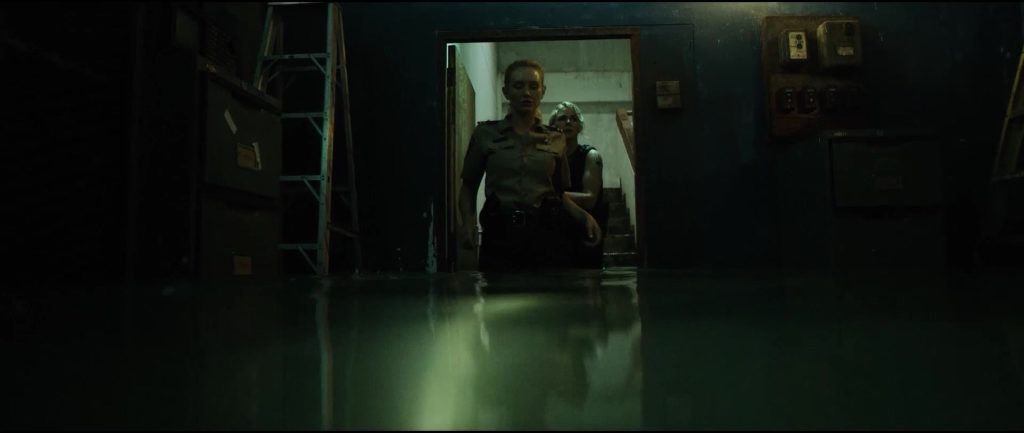
HF: How did you overcome the challenges to bring these complex scenes to life on screen?
DH: It’s will, it’s planning, it’s your team. One thing that you don’t realize is how humid it was on set. There were two water trucks always pumping water in. Then when you factor in all these people in a confined space and the fact that it’s hot and humid in Thailand. The set was often this steam room where everybody was in the water every day. So, it was a very trying movie set, but we made it because the whole entire team was in sync. It was the Thailand team, the art team, your stunt team. It also really came down to my producer Amy Covell and my director. In the end, it was all these people that came together to create this movie. All movies, but this one in particular because it was difficult.
HF: Were there any scenes or moments that had to be cut from the film?
DH: No. We literally put everything we could into the movie. There wasn’t anything left on the cutting room floor – we simply didn’t have the time to shoot extra footage or scenes beyond what made it into the final film. It was more that there were things in the script that we weren’t able to shoot because we just ran out of time given our restricted schedule. But no key footage was omitted – audiences will see everything we were able to capture in our limited shoot time.
HF: You said that you didn’t everything shot. Were there any scenes that weren’t shot?
DH: There are always pieces that end up having to be shortened or trimmed. There are scenes you have to shorten just because you’re running low on time. So that’s what ends up happening – or maybe in the initial script you have a ten-page day, but since we’re short on time we have to go through and say “Hey guys we can only shoot eight pages today, what needs to be cut?” And that’s kind of what it’s like with independent filmmaking, you have to make those edits as you go. So when you asked about scenes being left out, I’d say with indie films, the “cutting room floor” is really a matter of running out of time and budget during the shoot itself. We don’t have the luxury of shooting extra footage – we have to cut pages on the fly to stay on schedule and budget.
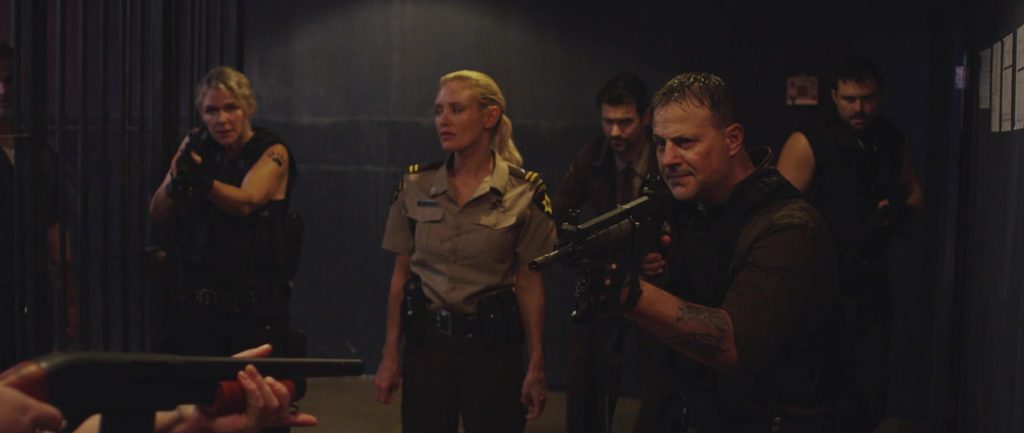
HF: What would you say was the most important factor in the success of The Flood? The story, cast, special effects, or something else?
DH: I think it’s actually a combination of the different genres. The Flood is a disaster movie, a prison movie, and also a creature feature – it’s a prison escape with a creature. We have a lot going on and I feel we were able to blend the story without being overly crazy, it’s a little crazy, but I feel like it just sets it apart that were able to pull it off. Which makes it a little special in my opinion.
HF: Watching the film I got an Assault on Precinct 13 meets Crawl vibe from the film.
DH: Totally. You hit the nail right on the head right there. I think Crawl is four and a half minutes of creature and we have nine and a half minutes. So, were happy with the outcome. I am also aware that people are going to judge us compared to other bigger-budget creature films out there, like Crawl. At the same time, comments like “Oh, that doesn’t look real” are inevitable, but it’s an indie, and our VFX team and I put everything we had into it and I’m proud of what we did.
HF: That always seems to be one of the biggest issues facing independent films. You have people look at it and discredit the film by calling out its effects as fake or cheesy. But as we talked about earlier, you’re not this huge studio putting out a multi-million-dollar movie.
DH: Yeah, you’re absolutely right. This was an extremely challenging film to pull off on our timeline and budget. We shot the entire movie in just fourteen days, working with limited resources. It was without a doubt a difficult film to produce. But despite all the challenges, we’re really proud of what we were able to accomplish and the final outcome, given the constraints we faced.
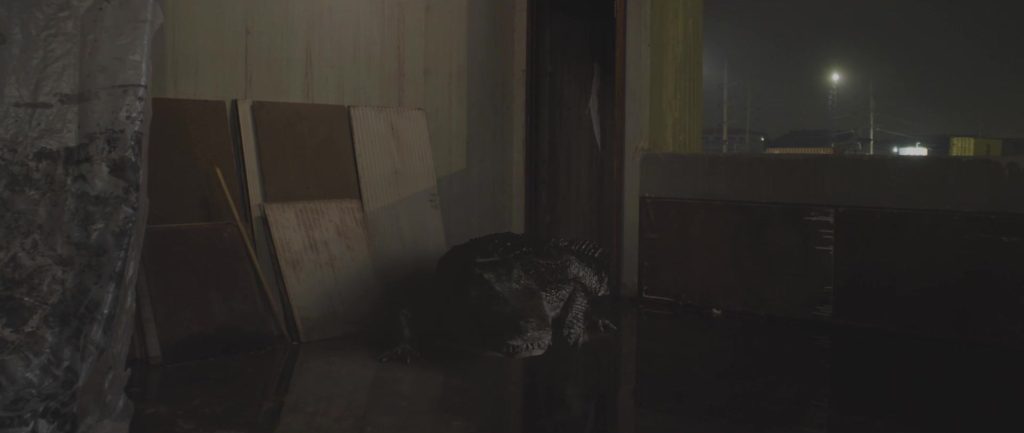
HF: What in your opinion makes this film unique and will differentiate itself from other “creature feature” feature films already out there?
DH: That goes back to blending the different genres. It is an Assault on Precinct 13 style movie like you mentioned, but at the same time it is a disaster movie, and it’s also a creature feature. So we’re going to appeal to different audiences. We’re going to engage action film fans, creature feature fans, and horror enthusiasts. This blending of multiple genres was one of the main reasons that I wanted this script because I felt that it hit a lot of different targets. That’s what I’m most proud of – that we were able to execute all those genre elements together into this film.
HF: Horror films often have passionate cult followings. Do you have any hopes of The Flood spawning a franchise with possible sequels? Or is this film more of a one-and-done type of scenario?
DH: Great question. We always hope that audiences will cherish a movie enough to warrant making another one. That means the original concept really resonated and people want more stories based on that idea, and it also means that we get to make more movies. But ultimately, we leave it up to the audience to dictate whether a follow-up happens. So, if viewers say “Hey, this is such a fun, campy, and cheesy, but still fun and entertaining movie”, then we get the opportunity to make another one. It’s the people watching the movie and driving up the numbers that will determine if the distributor calls me back saying “Where’s number two.” So, we’ll have to wait and see if people want more.
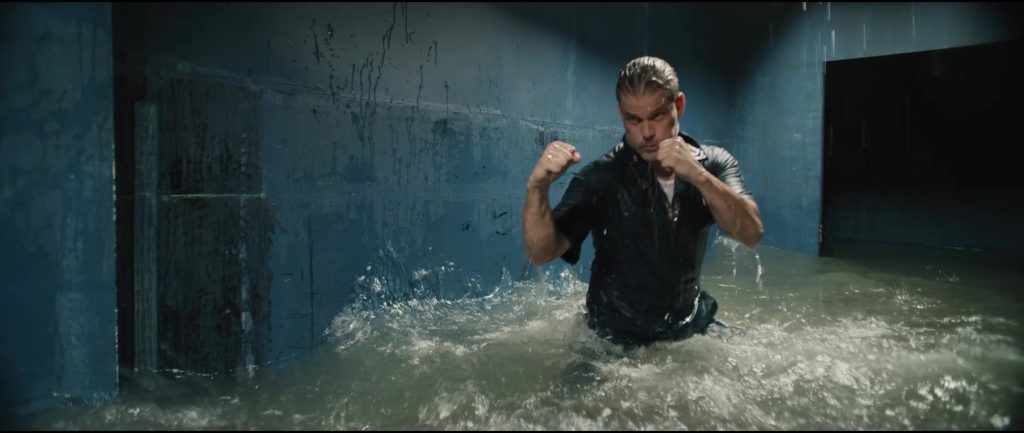
HF: What’s next for you as a producer?
DH: I have another World War 2 film coming out, called 3 Days in Malay, that’s with Saban and Well Go USA Entertainment. It’s a siege movie taking place in the south pacific. Louise Mandylor is directing it, this is the first time I had the opportunity to work with Louise as a director – he’s phenomenal. Rampage Jackson also stars in that film. Like The Flood, it was a tight production schedule – we shot 3 Days in Malay in just eleven days, which is insane for a WW2 movie. It was shot back-to-back with The Flood while we were in Thailand, which was challenging. We only had two days off after wrapping The Flood before starting the next film. So we literally transitioned from shooting The Flood straight into prepping for 3 Days in Malay, which was hard because you’re exhausted after finishing a movie but we had to jump right into the next one. 3 Days in Malay is going to be released this August by those two distributors. And then following that I did a practical creature feature called Operation Bloodhunt, it’s also set during World War 2 but has a supernatural feel to it. The creatures in this film are werewolves, and werewolves are very hard to do. So, we took a big chance on this film, using practical effects. To create our werewolf effects, we built suits and molded them specifically to fit our stunt performers. The suits had animatronic facial features that could be remotely controlled, allowing us to manipulate the werewolves’ facial expressions. Additionally, the actors wore stilts to make the werewolves appear taller and more imposing. The suits are amazing, and I am really happy with how they turned out. Jonathan Rhys Meyers stars along with Rampage Jackson. So, overall, I’m happy with Operation Bloodhunt. Then just a series of other films in the works.
HF: Constantly working and constantly making movies.
DH: Constantly. Eat, breathe, and sleep movies. That’s my life. Literally, it will be like eleven thirty at night and I will be taking calls, “Ok, how are we going to get this done? What is the problem?” That’s my life. But I love it.
After speaking with Daemon Hillin and getting a behind-the-scenes look at the challenges faced in creating his independent film The Flood, one thing is clear – independent filmmakers need an abundance of passion, grit, and determination to overcome the constant obstacles they encounter with limited resources and support.
Though major hurdles like financing, logistics, and production setbacks arise daily, Hillin displayed the relentless drive needed to solve every problem through sheer resourcefulness and willpower. His commitment to telling this story despite the numerous hardships is a testament to the perseverance required to make an indie film succeed when failure is not an option.
Hillin and his team’s tireless efforts to bring The Flood to life demonstrate the immense work ethic and resolve independent filmmakers must possess to craft quality films without the backing of a major studio. After witnessing the blood, sweat, and tears that go into making these indie movies, we have a newfound appreciation for the immense challenges they must confront and overcome.
The Flood is set for release on July 14th, 2023. The independent film will have a limited theatrical run, so be sure to check your local movie theater listings to see if it’s playing near you.
For those wanting to watch at home, The Flood will also be available the same day on major VOD platforms where you can purchase and stream the film. Catch the exhilarating disaster thriller on Amazon, iTunes, Vudu, Google Play, YouTube, Microsoft Store, FandangoNow, DirecTV, and more.
Don’t miss your chance to witness the story that Hillin and his team worked so tirelessly to create.

